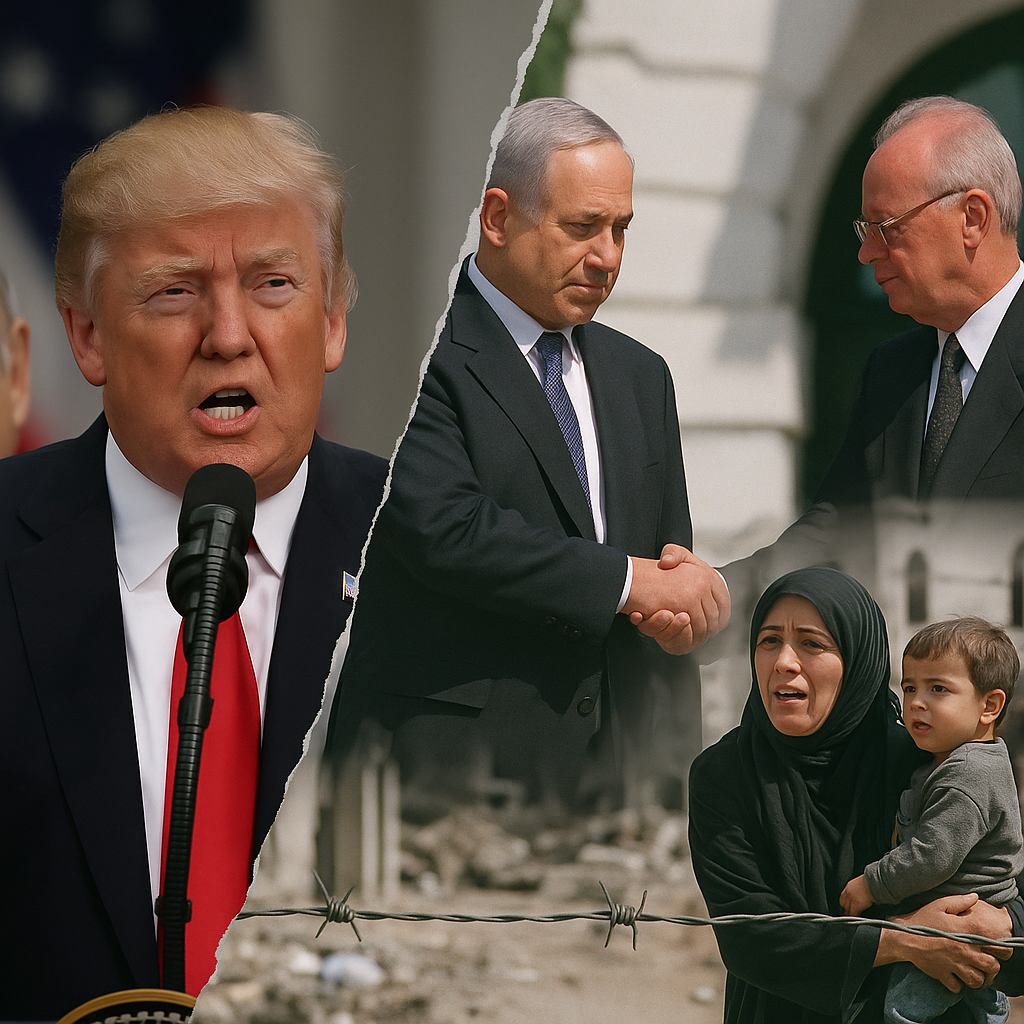Khurram Khan

The proposed peace agreement, unveiled by US President Donald Trump in a press briefing with Israeli Prime Minister Benjamin Netanyahu to bring an end to the Gaza War, is being presented as a golden opportunity for the Palestinian people. On the occasion, Donald Trump named two Islamic countries—Egypt and Pakistan—as backing the 21 “peace accord” from the onset. He also issued a veiled threat to Hamas, warning that if they did not accept the proposed agreement, Israel would be free to deal with Hamas as it deemed fit.
The proposed ‘peace plan’ received immediate support from the Prime Minister of Pakistan, Shahbaz Sharif, who released a statement as soon as the announcement was made from the White House. This came before any reaction from Hamas, reflecting uncalled-for exuberance to warm the cockles of Donald Trump in a clear policy departure regarding the Palestine issue.
The plan unveiled by Donald Trump hands Israel what it could not achieve in two years of fighting Hamas and trying to secure the release of its hostages. Trump is believed to have elicited the support of key Muslim countries, including Pakistan, during a meeting with selected Muslim states in New York a week earlier.
With the backing of the US and Western allies, Israel has been successful in neutralising inimical forces in the Middle East. Arab countries have always been wary of militant Arab groups like Hamas, and especially of those openly backed by Iran, such as the Shi’ite Hezbollah and the Houthis. The “peace plan” calls for the complete disarming of Hamas and the installation of an International Stabilisation Force (ISF), composed of Arab and international partners (including other Muslim countries), to act as a police force for maintaining peace. A gradual withdrawal of Israeli forces is stipulated to ensure that Hamas is defanged and the ISF is ready to assume control. A handpicked Palestine Committee (PC) will manage day-to-day public and municipal services under the supervision and oversight of a self-styled Board of Peace (BoP), headed by President Donald Trump, outside the remit of the United Nations or any other credible international arrangement.
The ‘peace plan’ is silent on timelines. It envisages Palestinian statehood but makes it contingent on its ‘faithful’ implementation and, even then, only “if the conditions may finally be in place for a credible pathway to Palestinian self-determination and statehood.” In the absence of a definitive timeframe, the PC, ISF, and BoP may continue indefinitely.
The ‘plan’ pledges that there will be no forcible eviction of Palestinians from Gaza. However, a similar ploy was used by Zionists before 1948 to dispossess Palestinians of their land by luring them into selling it. Where are the guarantees that the same tactics will not be used again, notwithstanding undertakings to encourage people to participate in rebuilding Gaza?
The ‘peace plan’ is a reincarnation of the defunct Oslo Accord, signed with much fanfare in 1995 between Yasser Arafat, Chairman of the PLO, and Yitzhak Rabin, Prime Minister of Israel, facilitated by US President Bill Clinton. That accord led to mutual recognition between Israel and the PLO with the stated aim of achieving a two-state solution. In reality, however, the dream became a nightmare that haunted Yasser Arafat, who died caged in a bunker, and the Palestinian people, ultimately giving rise to Hamas.
The Oslo Accord gave Palestinians a municipal government, but the Mayor of Lilliput wields more authority than Mahmoud Abbas, who holds the honorific title of President of the Palestinian Authority. In the aftermath of the Oslo Accord, Israel balkanised the West Bank and created Jewish settlements with impunity—and continues to do so.
Any peace plan is supposed to be between two warring parties. In this case, Israel has been declared victor and Hamas vanquished—not on the battlefield but at the ‘round table,’ when seven Muslim countries bowed down to the unilateral dictation of the US President. The outcome of this ‘peace plan’ will not be any different from that of the Oslo Accord.
The author is former Joint Director General, Intelligence Bureau, Pakistan

